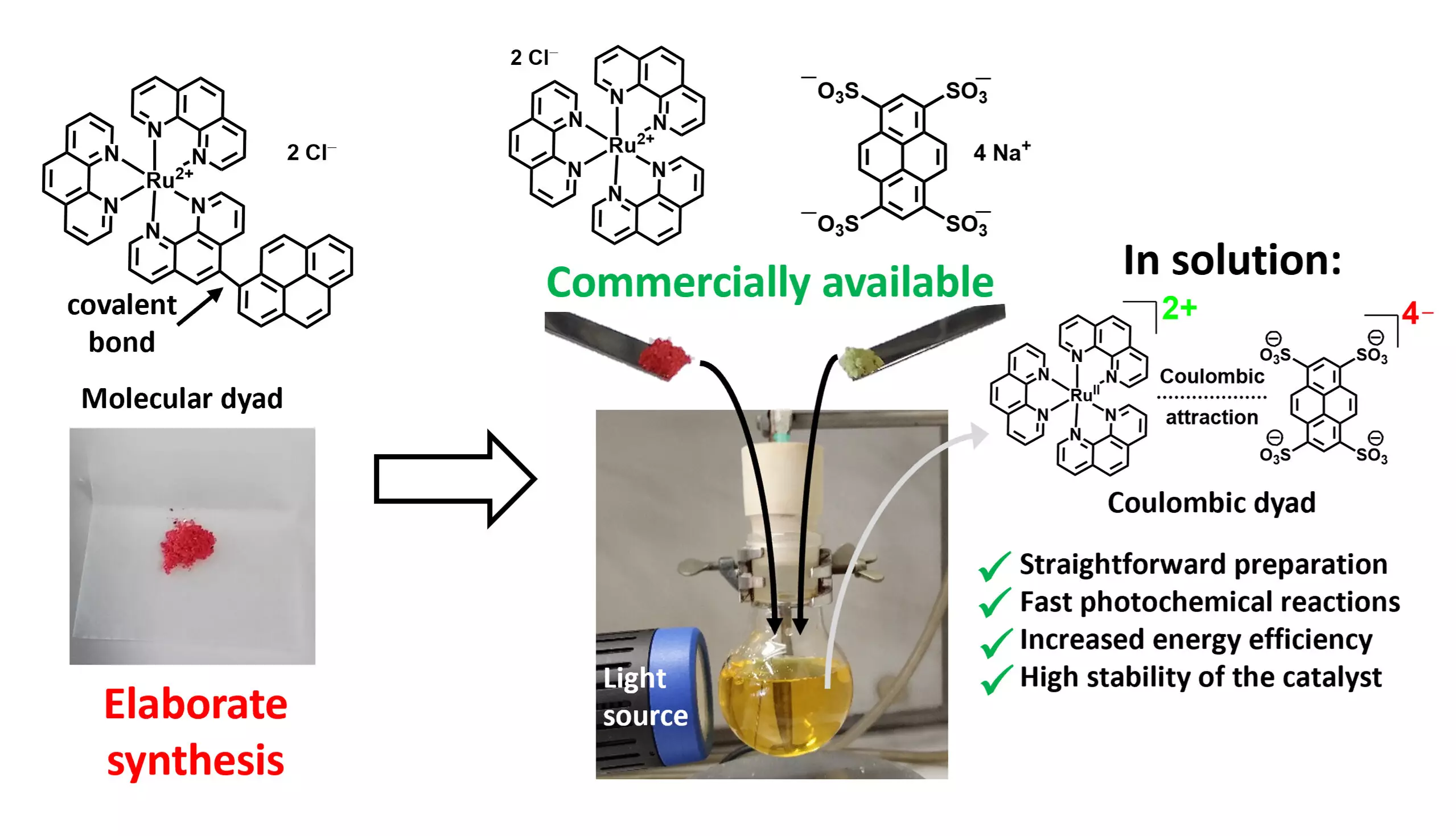Photocatalysis draws inspiration from nature’s ability to harness sunlight for chemical synthesis, primarily seen in the process of photosynthesis. This innovative approach employs light energy to instigate chemical reactions, which traditionally require high temperatures or severe conditions. However, for photocatalytic processes to gain a foothold in industrial applications, they must exhibit a significant quantum efficiency, meaning they can convert light into chemical energy effectively and economically.
The Challenges of Current Photocatalysts
One of the significant obstacles facing the field of photocatalysis is the high cost and complexity of creating highly efficient photocatalysts. Most effective photocatalysts consist of two interlinked photoactive units known as molecular dyads. These dyads often necessitate labor-intensive multi-step synthesis processes, making them impractical for large-scale industrial use due to cost constraints. Although many researchers are exploring ways to adapt non-precious metals to mimic the properties of expensive catalysts, the solutions often involve intricate ligand chemistry that further complicates the synthesis and effectiveness of these materials.
A groundbreaking study led by Professor Christoph Kerzig at Johannes Gutenberg University Mainz has introduced a novel method for developing efficient dyad photocatalysts. Instead of relying on complex multi-step syntheses or cost-prohibitive materials, the researchers have discovered that by simply mixing two commercially available salts, they can take advantage of Coulombic interactions. This attractive force allows the photoactive units to form an ion pair, thereby enhancing their ability to work synergistically. Such simplicity in approach has the potential to reset the standards for efficiency in photocatalytic applications.
Matthias Schmitz, the lead author of the study, draws a parallel between this method and the familiar composition of table salt, which consists of sodium and chloride ions bound by similar electrostatic forces. This fundamental understanding opens new avenues in photocatalytic research by suggesting that even existing materials can be optimized to unlock their full potential.
Performance and Industrial Relevance
The study’s findings, published in the esteemed Journal of the American Chemical Society, demonstrate that the newly developed Coulombic dyads not only outperform traditional catalysts but also exhibit increased durability and functionality. The researchers have employed sophisticated laser devices to analyze the crucial steps involved in the light-driven reactions, from photon absorption to the activation of reactants, yielding promising results.
Initial trials of these advanced photocatalysts indicate remarkable effectiveness in generating new chemical bonds, including a specific focus on carbon-carbon bond formation and photooxygenation of plant-based materials. The efficiency of this approach enables the utilization of sunlight and LED-generated light to produce valuable chemical products, indicating a significant potential for sustainable industrial applications.
An intriguing aspect of this novel approach is its inherent flexibility. The presence of various solvents can drastically alter the behavior and capabilities of the Coulombic dyads, allowing researchers to design tailored solutions. By combining different photoactive cations and anions, they can create a versatile toolbox of dyads, each optimized for specific reactions. This adaptability not only enhances the efficiency of the reactions but also broadens the applicability of photocatalysis across numerous chemical transformations.
The innovative work by Kerzig and his team promises to reshape the landscape of photocatalytic processes significantly. By simplifying the design and preparation of efficient photocatalysts, they present a compelling pathway toward more sustainable and economically viable chemical production methods. As photocatalysis continues to evolve, this research stands as a testament to the potential of merging established scientific principles with modern technological advancements. With further exploration and application, this strategy could lead to a new era of environmentally conscious industrial chemistry, fostering the development of processes that are not only cost-effective but also sustainable and efficient.

